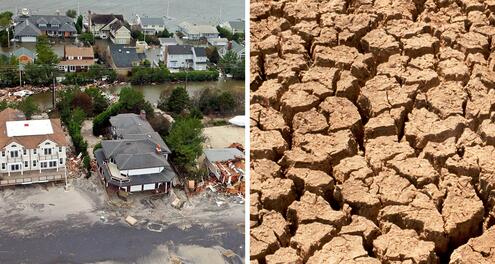


1
What is climate change?
a sudden change in conditions including temperature and precipitation
a change in global temperatures and weather patterns over many years
an extreme weather event such as a hurricane or drought
Nope. Try again!
Question 1 of 10
Image Credits:
Earth, NASA; storm, Bidgee / CC BY-SA 3.0 au; Moon on the Earth's atmosphere, NASA; weather station, Western Arctic National Parkland CC by 2.0; wood rings, Arnoldious / CC 2.5; Glacier, Smith609 / CC 3.0; chart, Ico Romero / AMNH; effects of flooding, U.S. Air Force photo by Master Sgt. Mark C. Olsen; effects of drought, CSIRO / CC BY 3.0; Sun and wind power turbines, T. R. Shankar Rama CC 3.0; Kids on bikes, public domain; Kids walking, Renegade-Geek CC 2.0.




 Biodiversity
Biodiversity
 Brain
Brain
 Genetics
Genetics
 Marine BiOLogy
Marine BiOLogy
 MicrobiOLogy
MicrobiOLogy
 PaleontOLogy
PaleontOLogy
 ZoOLogy
ZoOLogy
 AnthropOLogy
AnthropOLogy
 ArchaeOLogy
ArchaeOLogy
 Astronomy
Astronomy
 Climate Change
Climate Change
 Earth
Earth
 Physics
Physics
 Water
Water









